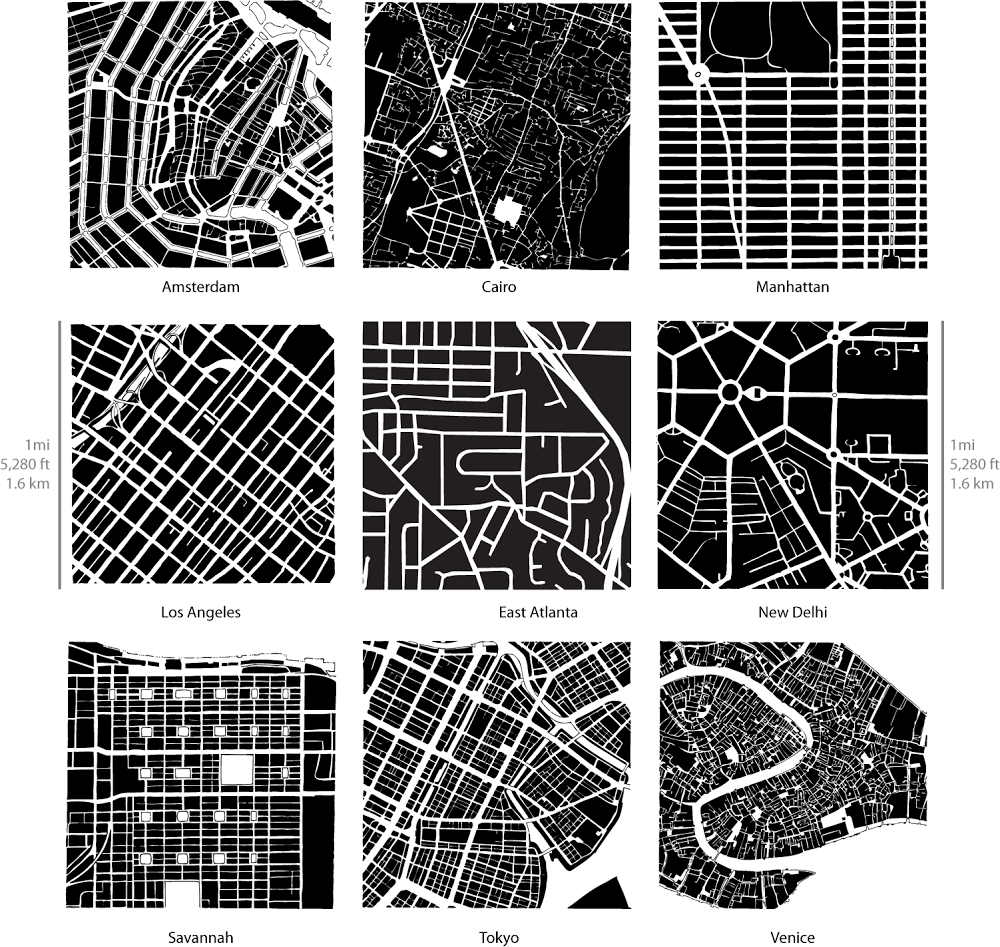Citys grow
We don't need to discuss that, there are a few examples of planned citys but these are not the topic here.
So when we assume that your city is a grown one, the question is how it is grown.
There are various effects on the way a city grows and I want to cut the most important ones:
Economy
This aspect has multiple effects. Beside the speed, which is increased by good economy and decreased by a bad one, this also effects what kind of buildings raise and where they're locatet. For example, a miner-settlement will grow living houses beside the mines. As the settlement grows, some of the living houses will be used as shops and light crafting houses.
Later there will be workshops like smiths, butcher etc. Workshops which emit smell are likely to be build in a little distance to the town. Later other workshops of this kind settle beside the other smelling workshops and even later, as the city grows, there will be no more distance between the workshops and the living houses, so even if they smell, one day they might be surroundet by houses.
In my example, what happens when the coal, or whatever they're mining, is empty? Many workers will leave and the economy might collaps. But maybe they find another economy. The city might have some dacades very poor economy, thus some houses will be abondoned and colapse.
Terrain
This is surely the most important point.
If the city is build nearby a river, one day they will build an harbour and like any economic facillity the houses will grow toward the harbour.
If there's a natural border like a cliff, they might cannot build on the other side of that border. But later hey might be able to.
Epoch
As I already told, growing fastens and slowers ofer time, depending on the economy. This means that several buildings, which have the same purpose, are build in different epochs and look different. Best example for that is an old town.
Also, over time some buildings collaps due bad maintenance, fire, whatever. These will be replaced when space get rare, thus there might be younger buildings in older parts of the city.
Current epoch has good economy or just came out of big destruction? There might be many buildings out of this epoch.
Current epoch has bad economy? Maybe they build a few houses, maybe they altered existing houses,...
Disasters
Epidemic, fire in "wood-only" parts of the city, earthquake and most destructive: war.
These events often destroy wide parts of a town and kill many people. Depending on the political and economic situation this can be both, good and bad for the city in long term.
For example, after WWII western germany managed become one of the leading economys in the world. Not really a city, but the issue should be the same. At the other hand, many citys get abondoned when they're destroyed (not talking about metropolises wich are rebuild in general). Disasters which destroy large parts of the city lead to the different buildings as I wrote at epoch.
None of these points are standing on their own. Every point is effecting the others!
Epoch has a strong bounding to economy. There will unlikely be a good economy over long time if the terrain is bad (no mining, bad infrastructural connection, ...)
The most important point of citybuilding is:
Its art! Be creative and have fun! If you don't like it you surely manage someone else who does and will help you. If you are not happy with your outcame, show it to other people and ask them for helpful critic, this issue can't be handled with general tips.

